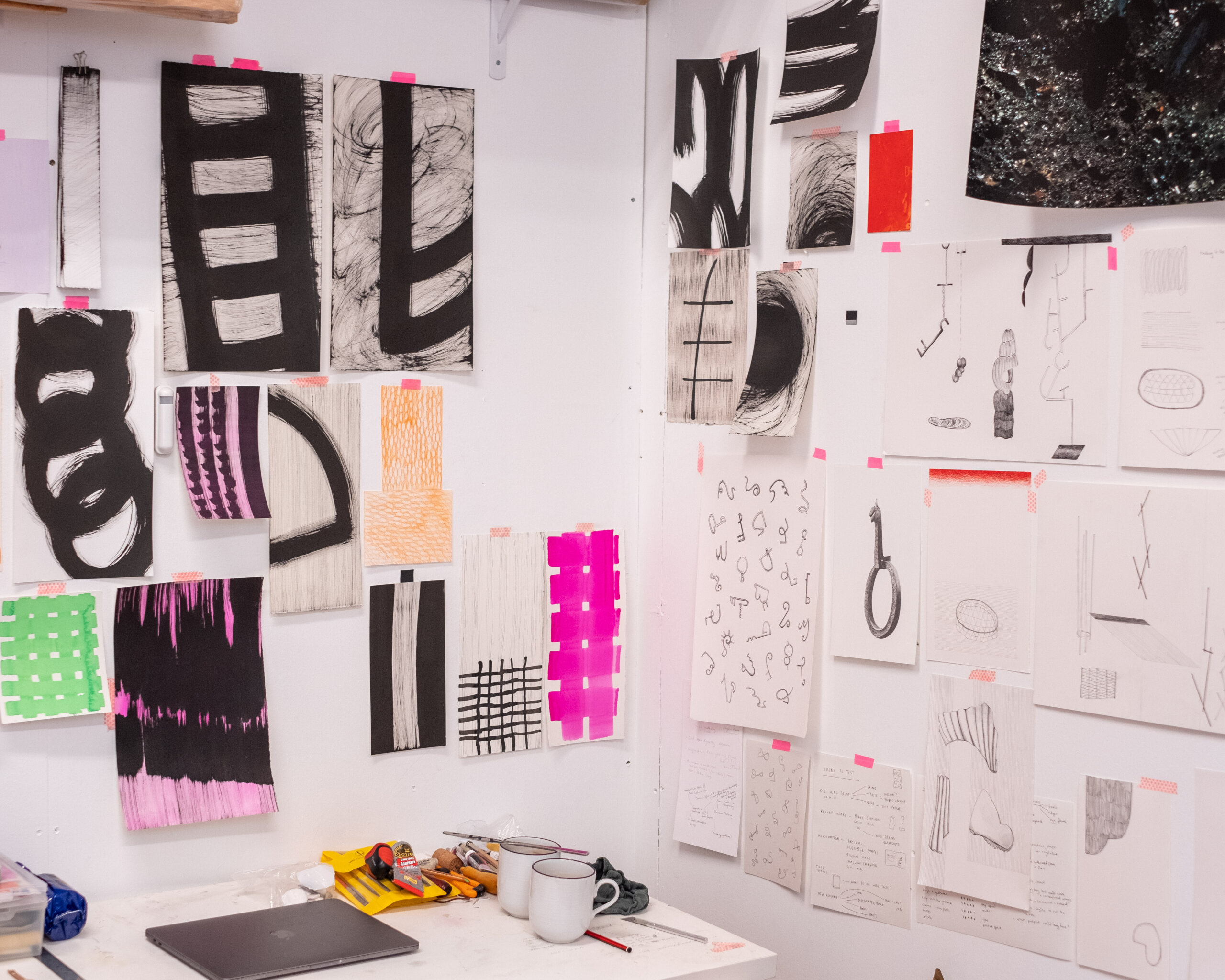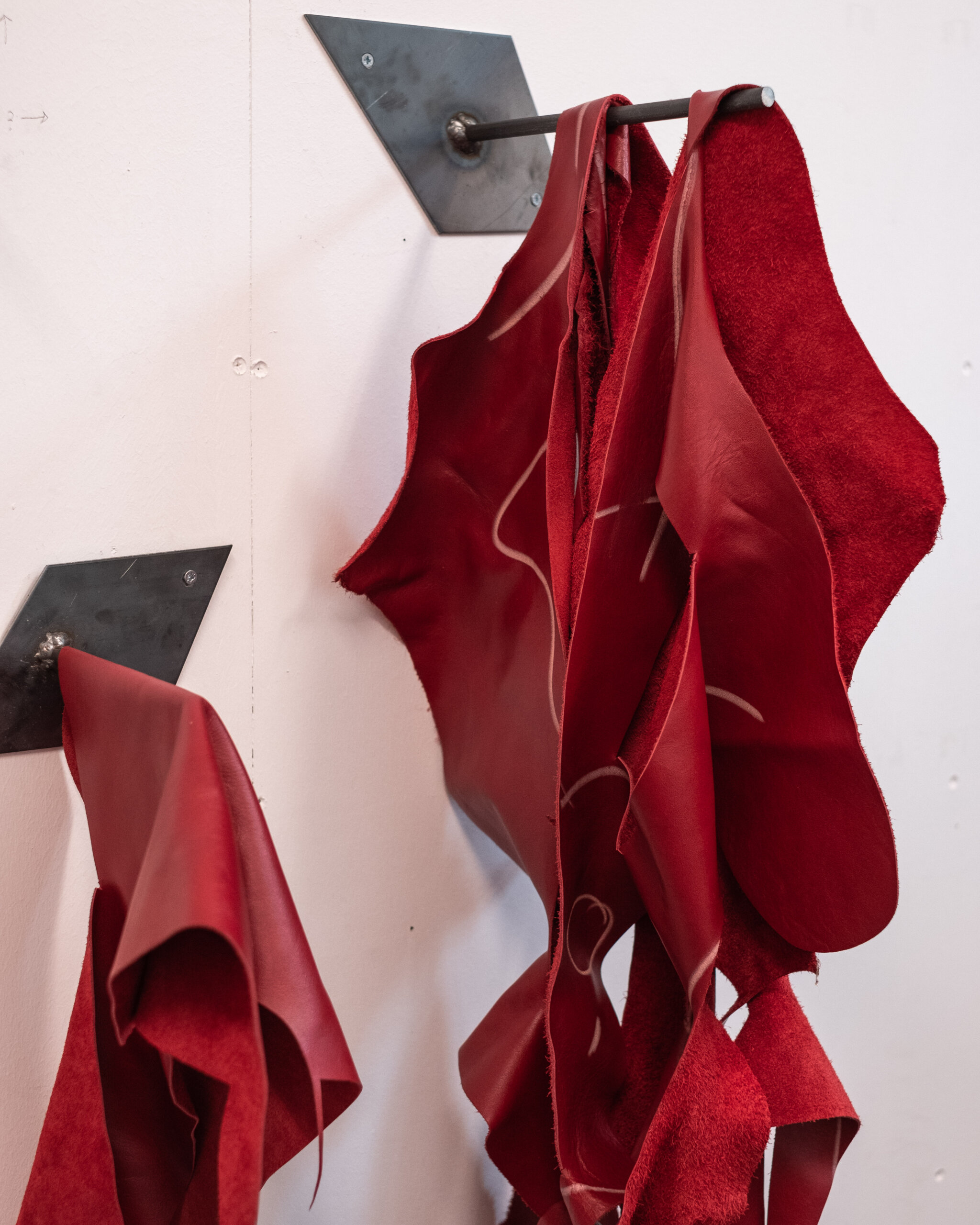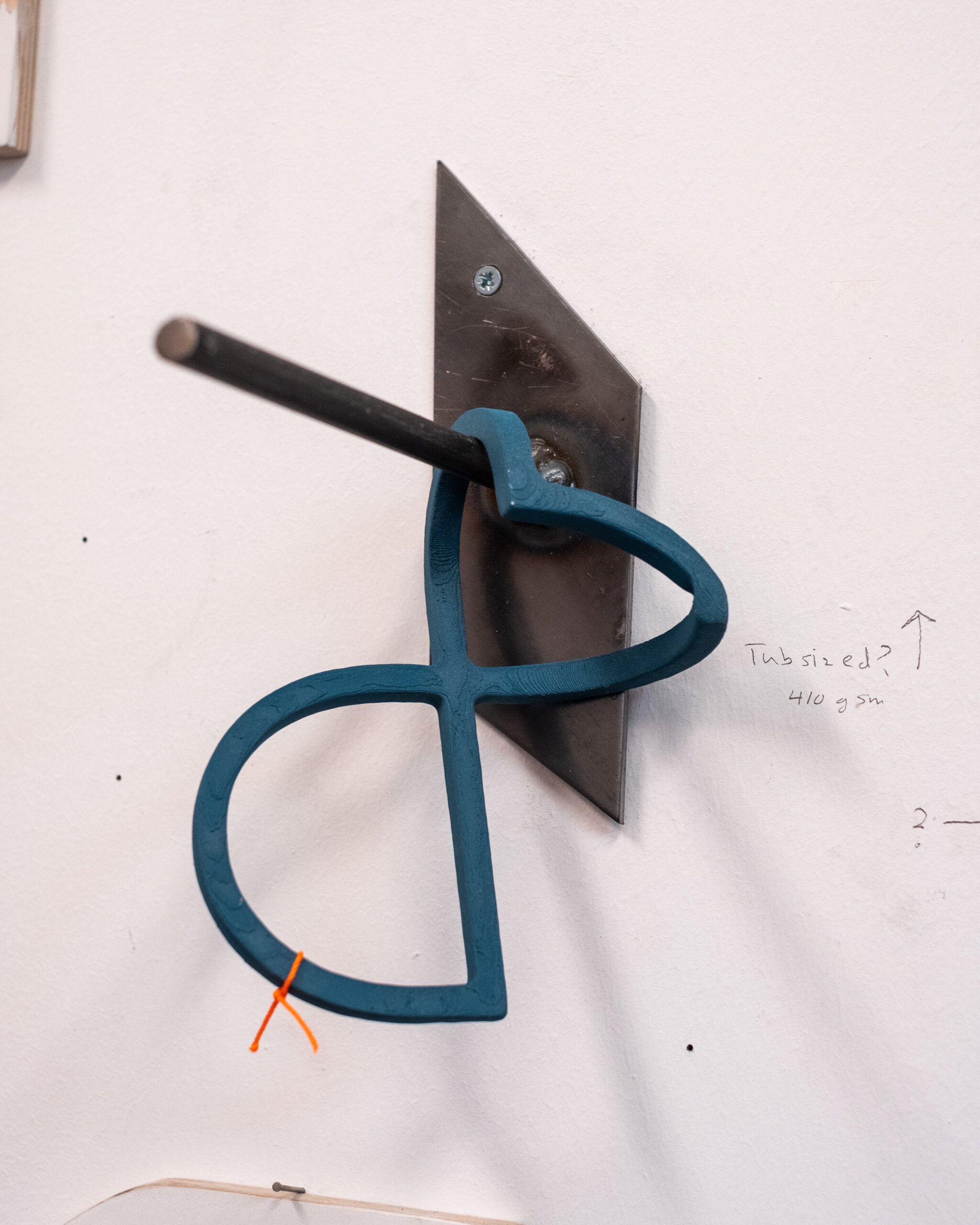We sat down with Julia McKinlay in her studio, at Patrick Studios.
We caught up with her about her upcoming residency/exhibition with Hiroko Nakajima at the Nakanojo Biennale exhibited from 9 September, her practice, and her process of working.
How do you describe your practice if someone isn’t familiar with it?
I make quite large-scale installations of lots of different objects and forms. My practice sits between sculpture, printmaking and drawing. So I’m interested in all of those ways of working as part of that process. The uncertainty of experimenting with material and allowing the material itself to lead and change the work is an important part of my practice.
Usually, installations end up being some sort of immersive environment of objects that talk to each other. That’s what people end up seeing exhibited. And the viewer is placed within that environment. This relates to my ongoing interest in natural history and landscape and the impact experiencing spaces like that have on my body and mind.
What does your working process look like?
I’ll start off with drawing some sketches and photographic research. Through drawing the space I’m imagining it begins to become something more physical. A large part of that process of making is what the materials and processes will do, and how those variables create whatever the piece ends up becoming. Much of the time you end up following the material, and it becomes a process of reactions that I couldn’t possibly have drawn or imagined. And that’s where I’m interested in the material driving the final form of the work.
Printmaking is a really generative way of working for me, I love being able to make large varied series to fully explore ideas. Sometimes the prints become installations in their own right, or a single print might inspire some new sculptures. I love print because of the infinite variables that hopefully you can control and understand. Working with pressure, acids, and the viscosity of ink can feel geological, and it is really interesting to experiment with elements and see what emerges from the press.
To me, despite it being larger scale, your work feels quite intimate. Is that a part of that process and a reflection of your work?
Kind of, when you’re walking through a landscape, like a woodland or a peat bog or something like that, and you’re having this incredibly spatial experience, but then as part of that there are all these small interlinked parts that make up the whole place – a moss for example, which is small but essential part of larger environments.
It’s this large gesture, the landscape, or the installation, is coupled with smaller moments, like the moss, or the sculptures/objects themselves, that are all part of the same ecosystem or space. I’m similarly inspired by experiences in museum archives and finding something key that chimes with my work. I’m looking partly to recreate some of these feelings of discovery in the viewer. Working across various materials and processes is important, as it can help create a layered space that the viewer also explores or experiences as a journey, finding things for themselves.
So you’re exhibiting collaboratively with Hiroko Nakajima at the Nakanojo Biennale. What does that process look like?
I met Hiroko when we were doing our MFAs at Slade, and we have maintained our friendship and been able to continue to work on exhibitions together despite the distance between us. Though technically we’ll be using the first two weeks of the process to create the installation, we’ve been sharing work together through remote studio visits over the last year or so. We both have produced some solid works from over the last year that we’re going to bring together, but beyond that we anticipate making quite a lot onsite in a fairly intense process.
I’m thinking a lot about materials – the space we’re showing in was previously a silkworm farm, so possibly using silk. Japan is a particularly good place for timber and stone, so possibly commissioning cut forms once I’m there, it’s all quite hard to predict. We both have quite different practices – Hiroko makes work that reflects interpersonal experiences, whereas I’m more interested in geology and other organic lifeforms, but the bond that brings both of us together in terms of making is a sensitivity to material.
What do you get from having a studio?
In a sense I’m quite a conventional artist – in the first instance, I need somewhere to make a mess and store stuff. It allows me a space in which I can be using materials in a controlled way, and it can also give me some thinking space that allows me to be just here.
It’s a nice community – a few of the other people on this floor also work with sculpture and so we have a lot in common. I’ve been here five years, and it’s great that if I do have questions about funding or something like that, there is someone at East Street Arts that I can reach out to, or that might then know someone else who can help. That is really invaluable when you are working often on your own as an artist.
Julia will be exhibiting at the Nakanojo Biennale with Hiroko Nakajima from 9 September until 9 October.
Find Julia:
Website: juliamckinlay.com | Instagram: @julia_mckinlay










